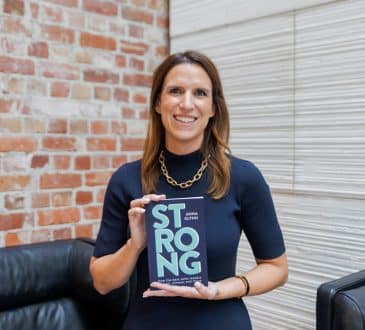Navigating the Labyrinth: Women’s Journey to C-Suite Management in Business Strategy and Forecasting in Pharma

As the number of women in leadership and C-suite management positions incrementally grow, long-standing barriers are withholding them from reaching gender parity with their male peers in a number of sectors especially in the pharmaceutical sector.
The landscape of women in leadership is changing, and according to more recent sources, the proportion of women in senior management roles has grown by 31%, the highest number ever recorded and only 5 percent are women of color in C-Suite according to a report published by Mc.Kinsey in 2021. The numbers in the field of Pharma strategy and forecasting are even less. Traditionally women are taken into regulatory field, but in data forecasting and AI the numbers are less and women need to be encouraged in these areas of tech.
It hasn’t been easy getting to this point, but today nearly 90% of companies globally have at least one woman in a senior management role, compared to 2021. Despite the promising outlook, women are still underrepresented in leadership.
- The Great Resignation caused in part due to the pandemic, saw women leaving their jobs at higher rates than their male colleagues.
- Not only did many of them retire to take up more family-related responsibilities, but for the women in leadership, the majority of them were seen switching jobs and leaving their companies faster, leaving a gaping hole in female representation in C-suite management.
- Workplace trends, which aren’t perhaps the sole cause of women’s underrepresentation in leadership roles, have further highlighted how the management cycle remains unchanged only further displacing women.
According to a report by McKinsey, for every 100 men who receive a promotion from entry-level to management, only 87 women and 82 women of color will receive the same promotion.
Men still outnumber women in management, and it’s becoming harder for female employees to catch up, simply because many have retired from the workforce, or there aren’t enough women to promote to senior leadership.
Breaking through the noise and sharing insight on the topic, Sanobar Syed, associate director-forecasting, market insights and strategy at BeiGene, who has also been recognized as the most influential and inspiring women in health care by Med Gate Today, shines more light on how women can break through existing barriers for gender parity in C-suite management. Pharmaceutical forecasting and business strategy have evolved significantly. In the aftermath of COVID-19, the industry is changing at a rapid pace. To keep up, it’s crucial for pharmaceutical companies to have expert forecasting and business analytics. These processes generate revenue and guide senior leadership in making billion-dollar investments.
Sanobar Syed is one expert who is changing the norm with an MBA and a Masters in Organic Chemistry, she can speak both business and science fluently, in 2023 alone, she has been invited to speak at over 10 top conferences, including the Pharma Market Research Conference USA, Rare Disease & Innovation Summit USA, Reuters Pharma USA, Pharma Medicinal Chemistry, World Pharma Summit Frankfurt, CPHI USA and Barcelona. These conferences collectively attract over 80K senior leaders and diverse global audiences.
Sanobar has led, advised and driven multimillion-dollar brands for big pharma giants like Beigene, Abbvie and Novartis. She has brought about a revolution in the industry where women still make up less than 30 percent of executive directors at top firms and even fewer in functions like forecasting and analytics. Sanobar has become a beacon for many young professionals aspiring to enter this field as a preferred career choice.
Typical organizational barriers
Organizational barriers, such as a lack of role models, traditional workplace policies and less powerful networks, are common challenges for women in the workplace. Some organizational structures were designed with male workers in mind, leaving little room for female representation.
Syed notes that there is still a strong bias towards men in terms of mentoring and sponsorship. While women are gaining access to networks and mentors, companies need to provide equal opportunity sponsorship for both men and women. Bridging the gap requires matching candidates with sponsors to consider them for promotions.
Other organizational barriers, such as less powerful networks and elusive experience, prevent women from taking on more leadership roles. Syed believes that companies need to recognize that employee needs have changed, especially for women. Many are no longer willing to take on traditional responsibilities and are seeking progressive duties with more elaborate workplace policies.
Cultural barriers
Despite significant improvements in workplace equality over the past 50 years, cultural barriers have led to higher rates of job loss among women compared to men. A combination of cultural and institutional obstacles have hindered women’s career advancement.
In May 2022, the National Women’s Law Center reported that women accounted for 46.4% of new job gains, or 188,000 jobs. However, despite these gains, women still face a deficit compared to the pre-pandemic job market. Currently, women’s jobs make up around 88% of the 822,000 net jobs lost since the start of COVID-19 in 2020.
Syed notes that traditional stereotypes and cultural bias have led many working mothers to assume parental and caretaker responsibilities during the pandemic. When forced to choose between their jobs and family, many chose the latter, resulting in a high quit rate among female workers.
Expecting working mothers and women to meet these expectations not only slows progress but also harms companies and organizations by reducing female representation in leadership and management.
Cultural barriers such as gender stereotyping, workplace sexism, and male competence assumptions remain significant challenges for women seeking career advancement and for those entering the workforce. Research indicates that around 72% of women have encountered or witnessed inappropriate behavior from male colleagues, and around two-thirds of women have experienced gender bias at work.
Other statistics show that 42% of American women have faced gender bias in the workplace, while 25% of them claim they still earn less than men who are doing the same job as them. Through her awareness raising conferences Sanobar is trying to walk the talk.
Personal barriers
Personal barriers, such as family responsibilities, have made it difficult for some women to re-enter the workforce as the pandemic subsides. Syed notes that while some women have embraced remote or hybrid work models, balancing professional and personal responsibilities remains challenging.
Research shows that 53% of women reported higher levels of stress and anxiety in 2021, and 45% reported feeling more burned out than before the pandemic. Syed says that women are not only taking on more challenges in the workplace but also risking their mental and physical well-being to compete with men.
To increase female representation in the workforce, companies must offer benefits that cater to employees’ specific needs rather than relying on outdated policies. A study of over 5,000 women across five countries found that respondents are seeking better flexibility, compensation, safe and healthy working conditions, and a supportive team. While financial benefits are important, the need for greater autonomy has become increasingly important for some women.
Concluding thoughts
As companies adapt policies to recognize the importance of women in the workplace, a more resilient and diverse workforce will help organizations understand the value of female representation in leadership. Building towards more inclusive workplace policies not only ensures that women can advance their careers but also helps break down traditional stereotypes and cultural barriers. While it may take several years to close the gender gap, efforts should focus on what works rather than holding onto outdated practices. This will lead to more diverse and inclusive representation in STEM, strategy and forecasting roles. “And If I could change just one person’s life I would consider myself successful”, says Sanobar.
Written by Jacob Wolinsky.
Have you read?
Best Fashion Schools In The World.
Best Business Schools In The World.
Best CEOs And C-Suite Executives In The World.
World’s Most Influential and Innovative Companies.
World’s Best Hospitality And Hotel Management Schools.
Add CEOWORLD magazine to your Google News feed.
Follow CEOWORLD magazine headlines on: Google News, LinkedIn, Twitter, and Facebook.
This report/news/ranking/statistics has been prepared only for general guidance on matters of interest and does not constitute professional advice. You should not act upon the information contained in this publication without obtaining specific professional advice. No representation or warranty (express or implied) is given as to the accuracy or completeness of the information contained in this publication, and, to the extent permitted by law, CEOWORLD magazine does not accept or assume any liability, responsibility or duty of care for any consequences of you or anyone else acting, or refraining to act, in reliance on the information contained in this publication or for any decision based on it.
Copyright 2024 The CEOWORLD magazine. All rights reserved. This material (and any extract from it) must not be copied, redistributed or placed on any website, without CEOWORLD magazine' prior written consent. For media queries, please contact: info@ceoworld.biz
SUBSCRIBE NEWSLETTER








